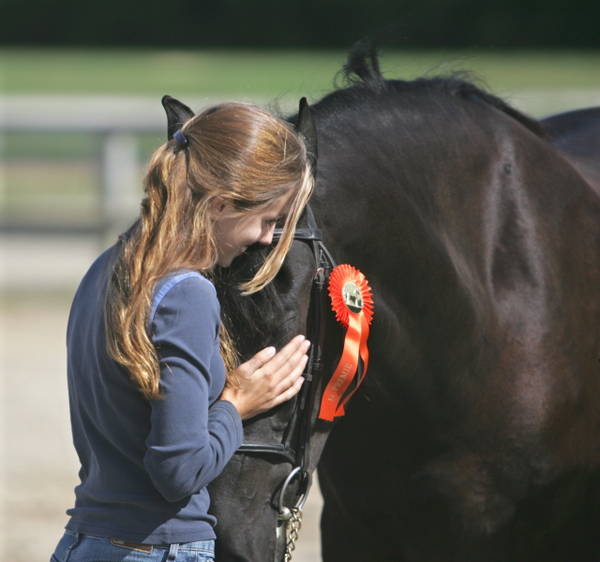What are Microchips?
A microchip is a small device about the size of a grain of rice. Microchipping horses is a relatively easy way to verify a particular horse’s identity based on the electronic data contained within the microchip. Each microchip has a unique 15-digit number assigned to one specific horse.
Once a microchip is assigned to a horse, it’s activated by a microchip scanner. The scanner is an electronic reading device required to read the implanted microchip. Many vets have microchip scanners, and you can also rent them from the FHANA office.
When the scanner passes over the area where the microchip lies, the scanner’s radio waves activate the chip. The microchip transmits the identification number to the scanner, displaying the number on the screen. Microchips implanted in Europe use a different electronic format than the microchips in North America. The FHANA readers can read chips in North American and European formats.
Microchipping Friesian Horses
Friesian horses registered in the Foal Book in 1997 or later must be microchipped. The microchip is implanted in the Friesian’s upper left neck, and the unique number is listed on the registration papers.
The process of microchipping a horse is relatively inexpensive and minimally invasive. The insertion takes only a matter of minutes. Microchips are more permanent than tattoos, brands, or other forms of identification.
After you have submitted the birth record of your foal to register in the KFPS foal book, you will receive a microchip kit. Most veterinarians will complete the procedure for you on the farm. The vet will need to confirm the chip can be located and read once implanted. They will also need to sign documentation stating they completed the procedure on that particular foal.
Why are Friesians Microchipped?
The main reason for microchipping is to verify the horse and match them to their papers. Microchips are also widely used among other breeds and animals (dogs, especially) if the animal is stolen or lost. Microchips allow for easy identification of missing animals.
Branding vs. Microchipping
Some older Friesian horses registered in the studbook have neck brands or tattoos. If your Friesian was branded, the brand would be on file with the KFPS and FHANA. It will also be recorded on the horse’s registration papers. With the addition of microchips to verify the horse, KFPS has discontinued branding for new horses entering the registry.

I’ve been around horses my entire life, but my Friesian journey started just over 20 years ago. Our horses have always been a part of our family. They have traveled with us as we relocated from Vermont to New York to Iowa and finally, to Arizona. I can’t wait to share our story with you!
Related
May 26, 2022
Microchipping Friesian Horses

Leave a Reply Cancel reply
@starlitridgefriesiansandfells
LET'S BE FRIENDS ON INSTAGRAM
Hello, are the microchips specific to the Friesian breed/registry or will any equine microchip work?
Hi Megan, That is a great question! The registry supplies the microchip when a foal is registered with FHANA or the FPS. The foal is either microchipped at the Keur or by a veterinarian who must certify the microchipped horse.